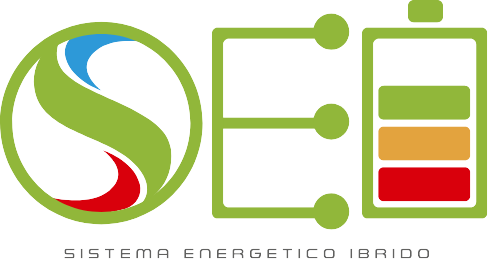Development opportunities
- Home
- Potential for development in the field of Smart Grids
Potential for development in the field of Smart Grids
The innovativeness of SEI is to integrate the various generation, storage and load sources in a single device, all by sharing a direct current bus (DC Bus). According to a recent report by Navigant Research the world market of direct current microgrids , in which the SEI is located, started from 609.1 million dollars in 2013 up to 9.7 billion dollars at the end of 2022. In the years to come, more than growth, a real boom is expected, which will lead to a series of changes and probable evolutions. The sharp increase in the penetration of energy produced from renewable sources into the electricity system, the so-called distributed generation, is requiring the development of new and more advanced grid management methods and the adoption of regulatory provisions that guarantee the sustainability of the investment itself.
According to a recent study commissioned by ANIE Energia at the Milan Polytechnic, the investment potential in ‘smart’ solutions by 2022 ranges from a minimum of 3 billion euros up to a maximum of 10. Furthermore, according to ANIE Energia, the microgrid market has been recording a progressive increase in recent years and it is expected that by 2025 it will be worth around 17.5 billion dollars. The most promising markets worldwide are those of South-East Asia, Australia, South America and South Africa, while in Europe the UK, Germany, Austria and Italy will drive growth.

Microgrids are a solution that is increasingly attracting the attention of industry and institutions. Microgrids are an element that could drastically change the traditional ways of generating, distributing and consuming electricity. Especially in cities, also leveraging on growing sustainability on the issue of climate change, microgrids will allow the integration of traditional and renewable energy sources for a more balanced, easily manageable and progressively more efficient and sustainable mix from an economic and environmental point of view.
Italy is among the world leaders in the sector of Smart technologies and Renewable Energy. In particular, the country is in fourth place in the world ranking, after China, Germany and the United States in investments in renewable energy; is in first place for solar applications both for classic photovoltaic applications and for peak CSP (Concentrated Solar Power) and CPV (Concentrated Photo Voltaic) applications; it is the country of technological and market reference for Intelligent applications (Smart Metering , Teleconduction of Distribution Networks, Automation of Secondary Substations and developments for Smart Grids ). But unlike other countries, Italy has not yet seen the flourishing of this new business.
The target applications for the Micro Grid business refer to small villages of around 1,000 – 2,000 inhabitants (around 20-25% of Italian municipalities) featuring around 200-350 users/consumers, small commercial and industrial businesses, public utilities (schools, public lighting) and small distributed generation. The global microgrid market will reach 30 billion dollars in value in 2022.
This is the estimate provided today by GlobalData in its latest analysis report. The document investigates the short-term growth of microgrids, a technological solution in which groups of electric generators and accumulators work in an integrated way with each other with the possibility or not of being connected to the electric grid. According to the International Energy Agency (IEA), 1.1 billion people lack access to electricity. More than 95% of these people are in sub-Saharan Africa or Asia and about 80% are in rural areas.
Microgrids have significant potential as a major driver for increasing access to energy for these populations. To address this need and meet electrification goals, the investment flows of private sector need to increase in the microgrid market segment. Microgrid solutions powered by renewable sources provide nearly 90 million people with electricity. To achieve universal access to electricity by 2030, it has been planned to double the business. It is estimated that off- grid solutions will provide 50-60% of the increase in generation necessary to achieve universal access to electricity by 2030. Therefore, from this analysis it is clear that the market ahead is quite diversified both geographically (at national, European and international level) and by type of customer (end user, companies operating in the plant engineering sector, companies operating in the energy services sector (ESCO).
